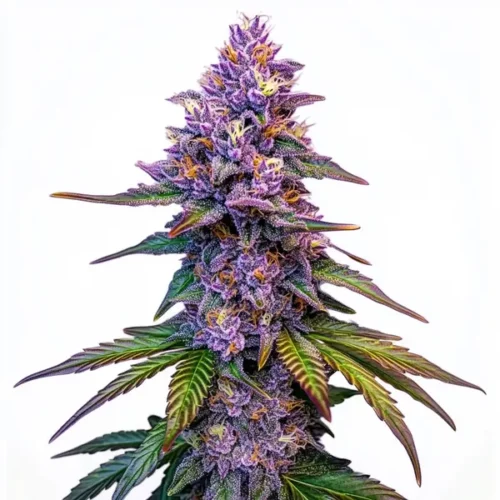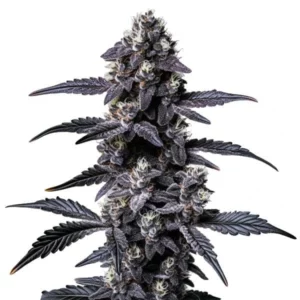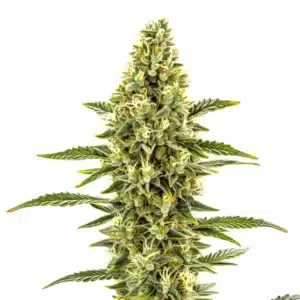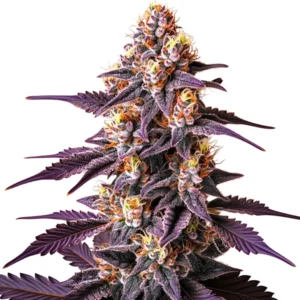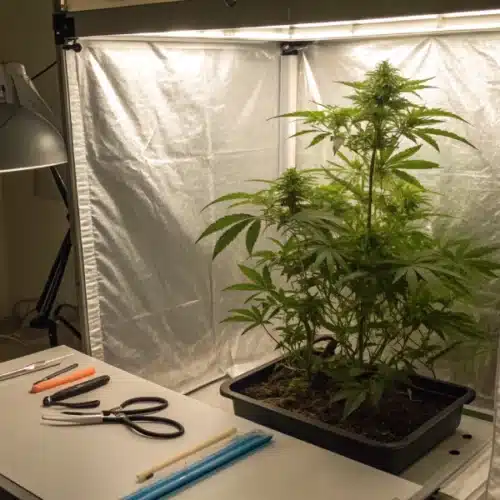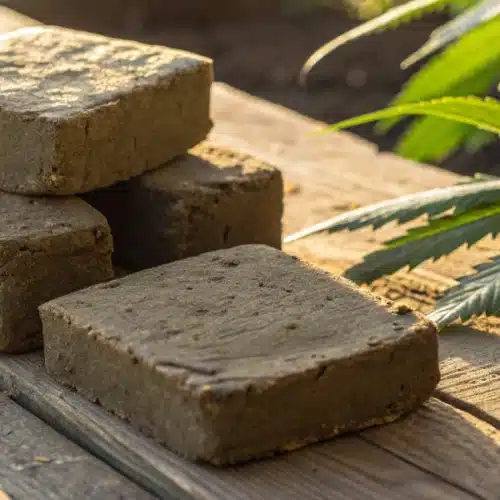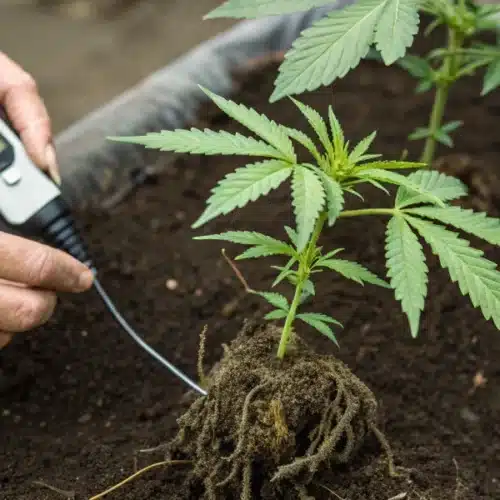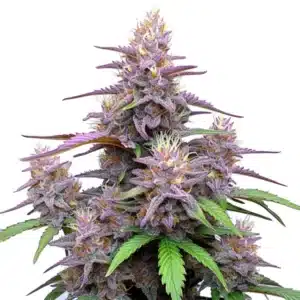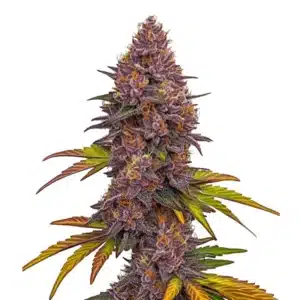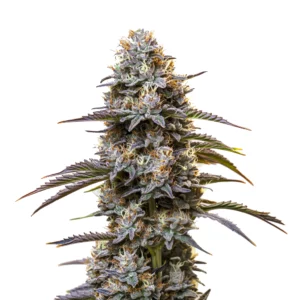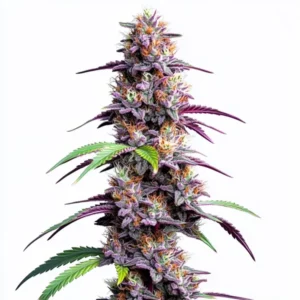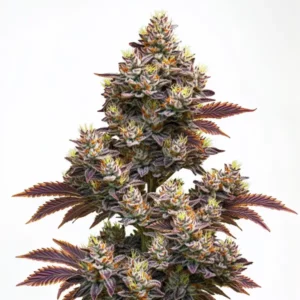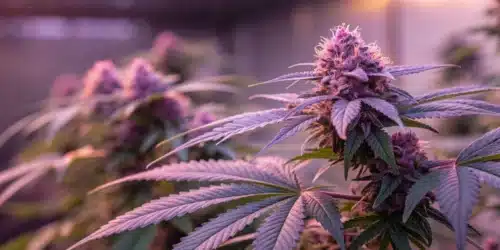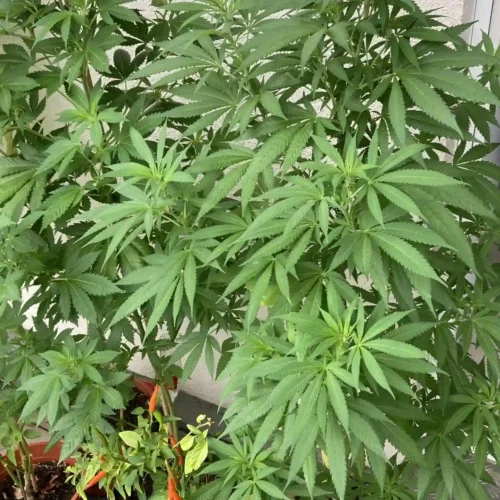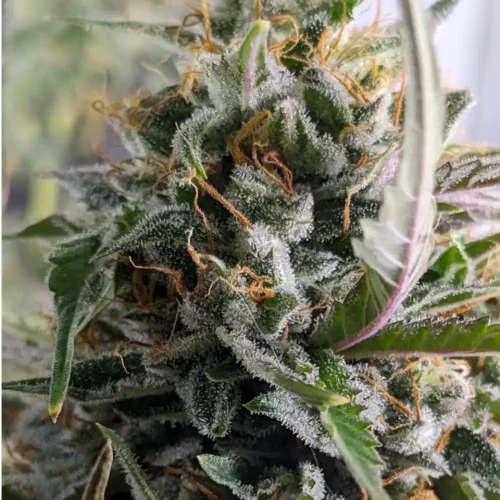Purple Lemonade Autoflower Strain Cannabis Seed Description
Purple Lemonade Auto is a highly sought-after cannabis strain known for its unique combination of aroma, flavor, and effects. This strain has gained immense popularity among cannabis enthusiasts for its exceptional characteristics.
Recommended Strains
Purple Lemonade Autoflower
 THC: 20% - 22%
THC: 20% - 22% Type of seed: Autoflowering
Type of seed: Autoflowering Phenotype: Mostly Indica
Phenotype: Mostly Indica Day to flower: 8 - 10 weeks
Day to flower: 8 - 10 weeks
This Strain is a result of crossing Purple Lemonade strain with an autoflowering strain. The outcome is a well-balanced hybrid that typically displays beautiful purple hues in its foliage, especially during the later stages of growth. The plant tends to stay relatively compact, making it suitable for both indoor and outdoor cultivation.
One of the standout features of Purple Lemonade Autoflower is its delightful aroma and flavor profile. It combines the sweet and citrusy notes of lemon with hints of berries and earthiness. This unique combination provides a pleasurable and memorable consumption experience.
Promos & Deals
Environmental Requirements for Growing Marijuana Purple Lemonade Autoflower
Creating the ideal environment for this strain plants is essential to ensure their successful growth and development. The specific environmental requirements of this strain will help you provide the best conditions for cultivation.
Purple Lemonade Autoflower thrives in a temperate climate with temperatures ranging between 70-80°F (21-27°C) during the day and slightly cooler temperatures at night. It is crucial to maintain stable temperature and humidity levels within the growing space to prevent stress and potential issues like mold or mildew.
When growing this strain indoors, it is essential to provide adequate lighting. High-quality LED grow lights or HPS lamps are recommended to ensure proper photosynthesis and robust bud development. During the vegetative phase, provide a light cycle of 18-20 hours of light per day, and then switch to 12 hours of light and 12 hours of uninterrupted darkness to initiate flowering.
For outdoor cultivation, select a location with ample sunlight and a favorable climate. Purple Lemonade Autoflower thrives in a sunny and warm environment, allowing it to reach its full potential. If you live in a region with cooler climates, consider using a greenhouse or providing additional protection to extend the growing season and safeguard your plants from adverse weather conditions.
Setting Up The Growing Cannabis Space
Before you begin growing Purple Lemonade Autoflower, it is crucial to set up an efficient and well-organized growing space, whether indoors or outdoors. Consider the following factors:
Indoor Cannabis Cultivation
For indoor growers, selecting the right grow tent or dedicated grow room is crucial. Ensure that the space provides sufficient room for the plants to grow vertically and has proper ventilation to maintain a fresh airflow. Install an efficient exhaust system with a carbon filter to control odors and prevent the accumulation of heat or humidity. Use reflective materials or Mylar sheets to maximize light distribution and avoid light leaks that could disrupt the flowering phase. These indoor setup tips are especially valuable for those documenting their cultivation in a purple lemonade auto grow diary, where environmental control plays a key role in achieving vibrant, resin-rich buds.
Choose a suitable growing medium for this strain, such as high-quality soil or a hydroponic system, depending on your preferences and experience. Ensure proper drainage to prevent waterlogging and maintain a balanced pH level of around 6.0-6.5 for optimal nutrient absorption.
Outdoor Cannabis Cultivation
When cultivating Purple Lemonade Autoflower outdoors, select a location with plenty of sunlight and suitable soil conditions. Ensure the soil is well-draining and rich in organic matter. Consider using large containers or fabric pots to have better control over soil quality and root health. Additionally, protect your plants from strong winds by placing them near a fence or using windbreaks.
Using stakes or trellises to support the branches of your Purple Lemonade Autoflower plants is recommended. This helps prevent the branches from bending or breaking under the weight of the developing buds and promotes better airflow.
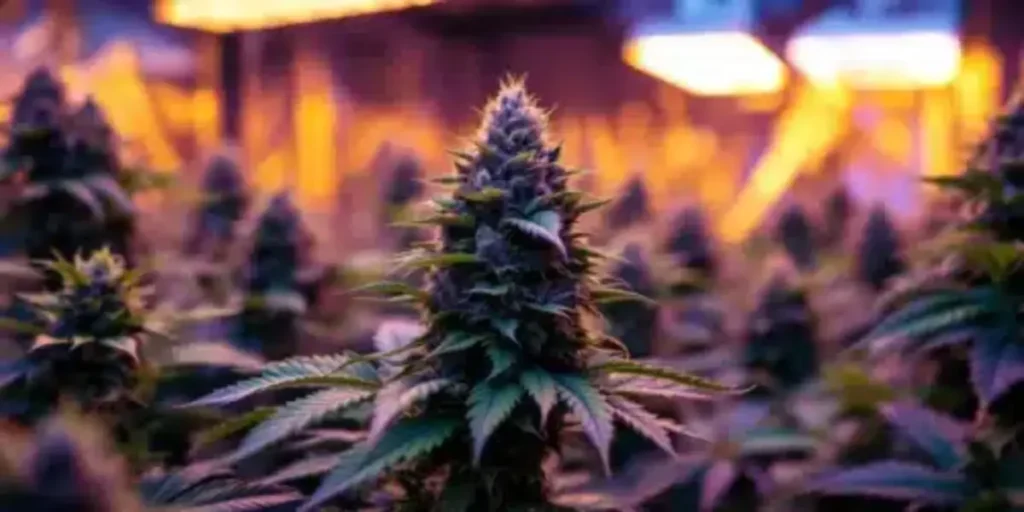
Propagation and Germination of Marijuana Seeds Purple Lemonade Autoflower
Successful germination and propagation are essential for healthy and vigorous Purple Lemonade Autoflower plants. Follow these steps to ensure a high germination rate and successful propagation:
1. Start by selecting high-quality Purple Lemonade Autoflower seeds from a reputable seed bank. This ensures genetic stability and the feminization of your plants.
2. Begin the germination process by soaking the seeds in distilled water or a damp paper towel for 24-48 hours. Maintain a temperature between 70-85°F (21-29°C) and provide a dark and undisturbed environment.
3. After the seeds have soaked and developed taproots, transfer them carefully to a pre-moistened growing medium, such as a seedling tray or small pots filled with a light and well-draining soil mix.
4. Place the seeds in a warm and humid environment with gentle airflow. Maintain a temperature around 75-80°F (24-27°C) and a humidity level of 60-70% for optimal germination.
5. Provide indirect light to the seedlings during the first few days, gradually increasing the light intensity as they develop. Avoid exposing them to intense light or heat that could cause stress or damage.
6. Once the seedlings have developed a few sets of true leaves, they are ready to be transplanted into larger pots or the final growing containers.
By following these germination and propagation steps, you can ensure a successful start for this strain plants and establish a strong foundation for healthy growth and abundant yields.
Vegetative Phase of Cannabis seeds Purple Lemonade Autoflower Strain
The vegetative phase is a crucial stage in the development of this strain plants. Here are some key considerations during this phase:
Lighting: Provide this strain plants with 18-20 hours of light per day to promote vigorous vegetative growth. High-quality LED grow lights or HPS lamps are recommended to ensure sufficient light intensity and spectral distribution.
Nutrition: During the vegetative phase, your Purple Lemonade Autoflower plants require a balanced and nutrient-rich diet. Use a reputable cannabis fertilizer with a higher nitrogen (N) content to encourage healthy leaf and stem growth. Follow the manufacturer’s instructions and monitor the plants for any signs of nutrient deficiencies or excesses.
Watering: Water your plants when the top inch of the soil feels dry. Avoid overwatering, as it can lead to root rot and other moisture-related issues. Allow the soil to dry out slightly between watering sessions, but ensure the plants do not experience extreme drought.
Training: Consider employing training techniques such as low-stress training (LST) or topping to control the height and shape of this strain plants. These methods help create an even canopy, increase light penetration, and promote better bud development.
Pruning: Remove any lower branches or leaves that receive little light or show signs of disease or pests. This helps improve airflow and reduces the risk of mold or mildew formation.
By providing this strain plants with the right environmental conditions, nutrition, and care during the vegetative phase, you can establish healthy and robust plants ready for the flowering stage.
Flowering Phase of Marijuana Seeds Purple Lemonade Autoflower Strain
The flowering phase is the most anticipated stage of growing Purple Lemonade Autoflower, as it is when the plants develop their characteristic buds. Here’s what you need to know:
Lighting: Adjust the light cycle to 12 hours of light and 12 hours of uninterrupted darkness to initiate the flowering phase. Use a timer to maintain a consistent light schedule. During this stage, this strain plants require intense light, so ensure your grow lights provide adequate coverage and maintain the appropriate distance from the canopy.
Nutrition: Transition from a nutrient formula higher in nitrogen to a bloom or flowering-specific nutrient formula. These formulations are generally higher in phosphorus (P) and potassium (K), which promote bud development and overall flowering performance. Monitor the plants closely and adjust nutrient levels as needed to avoid deficiencies or toxicities.
Temperature and Humidity: Maintain a slightly lower temperature during the flowering phase, ideally around 65-75°F (18-24°C), to encourage resin production and prevent heat-related stress. As for humidity, aim for levels around 40-50% to minimize the risk of mold or bud rot.
Support: As your Purple Lemonade Autoflower plants enter the flowering phase, the weight of the developing buds may cause branches to bend or break. Provide adequate support using stakes or trellises to ensure the plants can bear the weight and avoid bud damage.
Flowering Time: this strain typically has a shorter flowering time compared to photoperiod strains, usually around 7-9 weeks. Monitor the trichome development using a magnifying tool to determine the optimal harvest window.
Throughout the flowering phase, maintain a vigilant eye for any signs of pests or diseases. Implement proper pest management practices and take immediate action at the first sight of infestation or abnormalities.
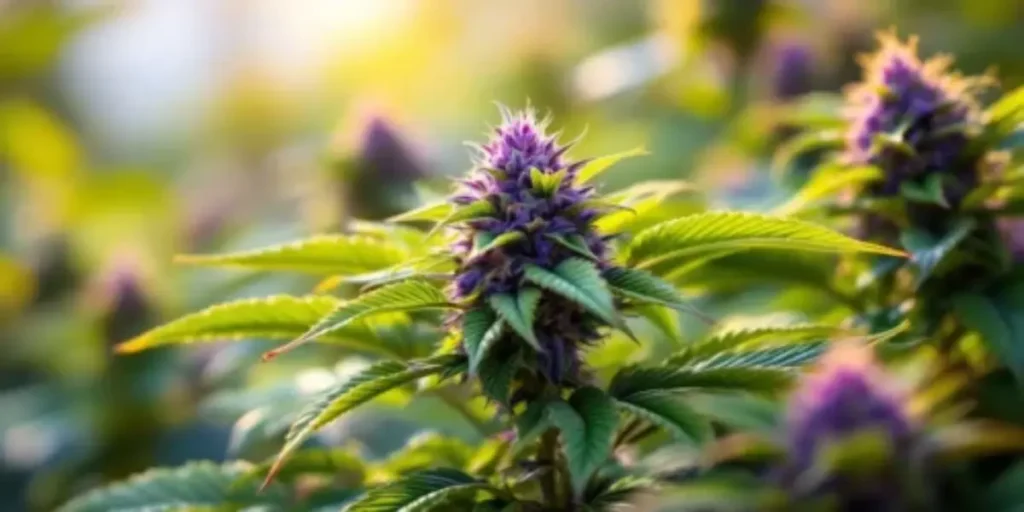
Cannabis Fertilization and Nutrition – Purple Lemonade Autoflower Strain
Proper nutrition and fertilization are crucial for maximizing the growth, yield, and overall health of your Purple Lemonade Autoflower plants. Consider the following tips:
Choosing the Right Fertilizer: Select a high-quality cannabis-specific fertilizer or nutrient line that provides a balanced blend of macro and micronutrients. Look for products rich in nitrogen (N), phosphorus (P), and potassium (K) to support healthy growth, root development, and bud formation.
Feeding Schedule: Follow the manufacturer’s instructions and adjust the feeding schedule based on your plants’ specific needs. Start with a lower concentration and gradually increase it as the plants progress through their growth stages. Monitor the plants closely for any signs of nutrient deficiencies or excesses, and make adjustments accordingly.
Supplements and Additives: Consider incorporating supplements and additives into your feeding regimen to enhance specific aspects of plant development. These may include bloom boosters, beneficial microbes, enzymes, or organic amendments that improve soil structure and nutrient availability.
Regularly monitor your plants’ response to the feeding program, adjusting nutrient concentrations and frequencies as needed. For strains like Blimburn Purple Lemonade Auto, it’s especially important to flush the plants with pure water during the final weeks of the flowering phase to remove any excess salts or nutrients, which can affect the flavor and overall quality of the final harvest.
Pest And Disease Control for Cannabis Growing – Purple Lemonade Autoflower Strain
While Purple Lemonade Autoflower Strain is known for its resilience, it is still susceptible to pests and diseases. Implementing proper pest and disease control measures is crucial to protect your plants and ensure a successful cultivation. Here are some preventive and corrective actions:
Prevention:
- Regularly inspect your plants for any signs of pests, such as spider mites, aphids, or thrips. Early detection is key to preventing a full-blown infestation.
- Maintain a clean and tidy growing space, removing any dead plant material or debris that could harbor pests or pathogens.
- Introduce beneficial insects, such as ladybugs or predatory mites, to your garden to help control pests naturally.
- Ensure proper airflow and ventilation in the growing space to reduce the risk of mold or mildew formation.
- Quarantine new plants or clones before introducing them into your growing area to prevent the spread of pests or diseases.
Corrective Actions:
- If you detect pests, use organic or low-toxicity pest control products specifically formulated for cannabis. Follow the instructions carefully and avoid using harsh chemicals that can compromise the quality of your harvest.
- If an infestation becomes severe, consider pruning or removing heavily affected plant parts to prevent the spread of pests and allow the remaining healthy portions to recover.
- For fungal diseases like powdery mildew or botrytis, use appropriate fungicides or treatments recommended for cannabis. Ensure good air circulation, maintain lower humidity levels, and avoid wetting the plant foliage during watering.
- Regularly inspect your plants for any signs of nutrient deficiencies, which can weaken them and make them more susceptible to pests and diseases. Adjust your feeding regimen to address any deficiencies promptly.
- Keep a close eye on environmental conditions, as factors like temperature, humidity, and airflow can influence the likelihood of pest and disease issues. Make necessary adjustments to maintain an optimal growing environment.
By combining proactive prevention measures with swift and appropriate corrective actions, you can minimize the impact of pests and diseases on your Purple Lemonade Autoflower plants and ensure a successful harvest.
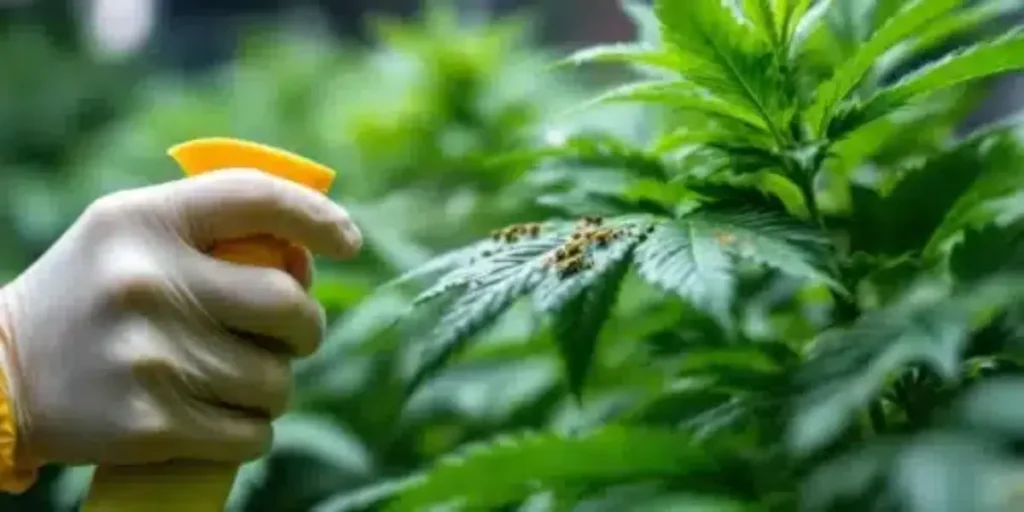
Harvesting and Curing for Cannabis Growing – Purple Lemonade Autoflower Strain
Harvesting and curing this strain buds are critical steps in the cultivation process that significantly affect the quality and potency of your final product. Here’s what you need to know:
Harvest Timing: To determine the optimal harvest time, closely inspect the trichomes on the buds using a magnifying tool. Harvest when the majority of trichomes have turned cloudy with some amber trichomes. Avoid harvesting when the trichomes are mostly clear, as this indicates that the buds are not yet fully mature.
Harvesting Technique: Use sharp, clean scissors or pruning shears to carefully trim the mature buds from the plant. Handle the buds gently to avoid damaging the delicate trichomes and resin glands.
Trimming: After harvesting, trim away any excess leaves and foliage from the buds. This enhances the appearance and overall quality of the final product. You can use the trimmed leaves for making extracts or edibles.
Curing: Place the trimmed buds in glass jars with airtight seals. Store the jars in a cool, dark place with a relative humidity of around 60-65%. Burp the jars daily for the first week by opening them briefly to release any excess moisture and promote proper curing. After the first week, burp the jars less frequently, transitioning to once every few days or weekly as needed. Curing typically lasts for 2-4 weeks or longer, depending on your preference and the desired level of flavor and potency.
Quality Control: During the curing process, monitor the buds for any signs of mold or mildew. If you detect any issues, remove affected buds immediately to prevent further contamination.
Curing allows the buds to develop their full aroma, flavor, and smoothness while reducing harshness. Properly cured Purple Lemonade Autoflower buds will deliver a more enjoyable and satisfying cannabis experience.
Purple Lemonade Autoflower Strain: Indica or Sativa?
Purple Lemonade Autoflower Strain is considered a well-balanced hybrid, meaning it possesses characteristics of both indica and sativa cannabis varieties. This strain offers a harmonious blend of effects, making it suitable for various preferences and situations.
Here are some general characteristics of indica and sativa strains:
- Sativa: Sativa strains are known for their uplifting, cerebral effects. They often enhance creativity, energy, and mental alertness. Sativa strains are usually chosen for daytime use and may be associated with mood elevation and focus.
- Indica: Indica strains tend to have relaxing, body-centric effects. They often provide a sense of calm, physical comfort, and relaxation. Indica strains are typically chosen for evening or nighttime use and may be associated with pain relief and stress reduction.
As a hybrid strain, this strain offers a balanced experience, combining the best of both worlds. Users often report a pleasant blend of relaxation and euphoria, making it versatile for different occasions and personal preferences.
Keep in mind that individual experiences with cannabis can vary, and the effects of Purple Lemonade Autoflower may also depend on factors such as dosage, tolerance, and individual sensitivity to cannabinoids and terpenes.
Advantages of Growing Purple Lemonade Autoflower Strain Cannabis Seeds
There are several advantages to growing Purple Lemonade Autoflower Strain cannabis seeds:
- Shorter Growth Cycle: Autoflowering strains, including Purple Lemonade Autoflower, have a shorter growth cycle compared to photoperiod strains. They automatically transition from the vegetative phase to the flowering phase, resulting in a quicker harvest, typically around 10-12 weeks from germination to harvest.
- Compact Size: Purple Lemonade Autoflower plants tend to stay relatively compact, making them suitable for growers with limited space or those looking to maintain a more discreet grow. Their smaller stature also makes them easier to manage and less prone to stretching.
- Unique Flavor and Aroma: this strain is renowned for its distinctive flavor and aroma profile, combining citrusy, sweet, and berry notes. The unique terpene profile of this strain provides a delightful and memorable consumption experience.
- Adaptability: Purple Lemonade Autoflower can be cultivated both indoors and outdoors, offering flexibility to growers with different preferences and available resources. It can thrive in various environmental conditions and is suitable for novice and experienced growers alike.
- Well-Balanced Effects: This hybrid strain delivers a balanced combination of indica and sativa effects, offering relaxation and euphoria. It can cater to a wide range of users and scenarios, making it versatile and appealing.
These advantages make this strain a popular choice among cannabis cultivators, especially those looking for a relatively quick and rewarding growing experience.
Disadvantages of Growing Purple Lemonade Autoflower Strain Cannabis Seeds
While Purple Lemonade Autoflower Strain offers numerous advantages, it also comes with some disadvantages that growers should be aware of:
- Yield Potential: Autoflowering strains typically produce smaller yields compared to photoperiod strains. Purple Lemonade Autoflower may not yield as abundantly, making it less suitable for growers looking for maximum harvest quantities.
- Less Control: With autoflowering strains, growers have less control over the timing of the flowering phase. This can be challenging for those who prefer to manipulate the light cycle to achieve specific growth goals or maximize yields.
- Training Limitations: Due to the autoflowering nature of the strain, training techniques such as topping or extensive pruning can be less effective or detrimental. Growers who rely on these methods may find limitations when cultivating this strain.
- Cost Consideration: Some growers may find that the cost of autoflowering seeds is higher than that of regular photoperiod seeds. This can impact the overall financial investment in the cultivation project.
Despite these disadvantages, many growers appreciate the unique qualities and benefits of Purple Lemonade Autoflower Strain and are willing to work within its limitations to enjoy its unique attributes and relatively quick growth cycle.
FAQs about Purple Lemonade Auto strain
What are the optimal growing conditions for Purple Lemonade Auto strain?
Purple Lemonade Auto strain thrives best in a controlled indoor environment with stable temperatures between 70°F and 80°F. It requires a consistent light cycle, proper ventilation, and moderate humidity levels to prevent mold. Using quality LED lights and nutrient-rich soil further enhances growth. Adequate airflow and regular monitoring of temperature and moisture ensure robust development and healthy yields effectively.
How long is the flowering period for Purple Lemonade Auto strain?
The flowering period for Purple Lemonade Auto strain typically lasts around eight to ten weeks. During this time, the plant undergoes rapid bud development and displays its purple hues. Environmental factors such as light intensity, nutrient availability, and temperature can slightly adjust the duration. Consistent care and timely adjustments contribute to achieving maximum potency and yield during the critical flowering stage of this auto-flowering variety.
What nutrient regimen is recommended for Purple Lemonade Auto strain?
A balanced nutrient regimen is essential for Purple Lemonade Auto strain throughout its life cycle. In the vegetative stage, a nitrogen-rich formula supports vigorous growth, while the flowering stage benefits from fertilizers high in phosphorus and potassium. Supplementing with trace minerals enhances bud development. Monitoring and adjusting levels based on plant response helps avoid deficiencies and maximizes health and yield for this auto-flowering cannabis variety.

